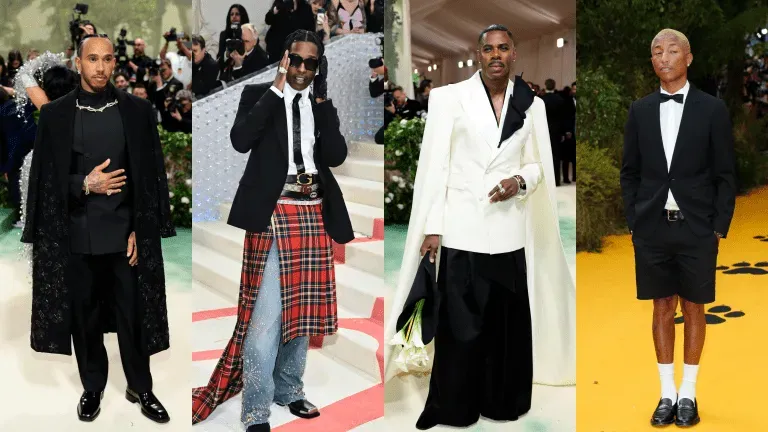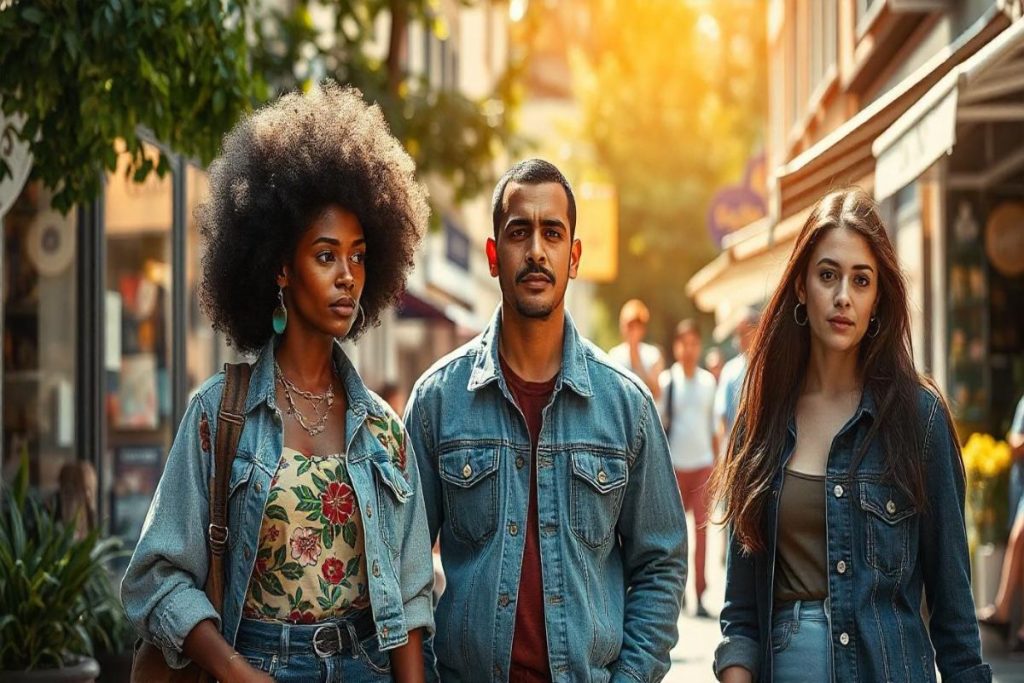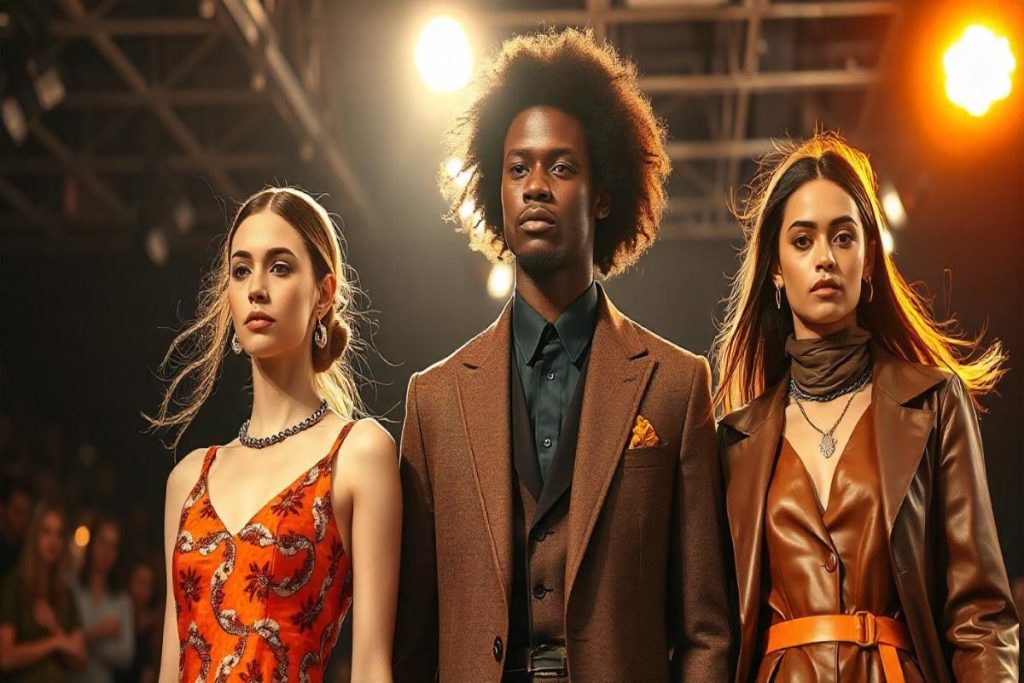The Black dandyism exhibition at the Metropolitan Museum of Art promises an illuminating journey into the intricate world of Black fashion culture. Titled “Superfine: Tailoring Black Style,” this groundbreaking showcase opens on May 10, 2025, and is set to redefine conversations around Black designers in fashion and their contributions to the broader narrative of style. Drawing inspiration from the life of fashion icon André Leon Talley, the exhibition explores how dandyism encapsulates both personal identity and collective heritage within Black culture. Through a meticulous collection of over 200 artifacts, including stunning garments and thought-provoking photography, the exhibition offers a cultural critique of fashion that resonates with themes of agency and self-expression. As visitors walk through this vibrant display, they will gain a deeper understanding of the nuances and complexities that characterize Black dandyism and its indelible imprint on the fashion landscape.
Exploring the phenomenon of Black dandyism invites a broader reflection on the intersection of elegance and identity within the African diaspora. This vibrant exhibit, referring to the art of tailoring and fashionable expression, shines a light on the aesthetic choices made by Black individuals throughout history. By celebrating the involvement of Black designers and their unique styles, the exhibition not only showcases sartorial ingenuity but also emphasizes the cultural significance of clothing as a means of resistance and identity formation. The intertwining narratives of luxury, heritage, and self-expression create a rich tapestry that speaks to the heart of Black culture and the enduring impact of dandyism on contemporary fashion practices. As attendees engage with this dynamic exhibit, they will discover the powerful stories that lie at the core of Black sartorial traditions.
Exploring Black Dandyism and Its Impact on Fashion
The exhibition ‘Superfine: Tailoring Black Style’ delves deep into the concept of Black dandyism, illustrating how this unique mode of dressing became a significant form of self-expression for Black men throughout history. Dandyism, characterized by its flamboyant aesthetics and meticulous attention to style, plays a pivotal role in shaping Black identities within the broader cultural landscape. The connections drawn between historical figures like Frederick Douglass and contemporary designers reflect how the act of dressing elegantly serves both as a political statement and an assertion of personal identity.
In essence, Black dandyism is more than just a fashion statement; it embodies the resilience and creativity of a demographic that has often been marginalized in mainstream conversations about style. The exhibition presents over 200 items, from historical garments to modern-day creations, which not only showcase sartorial mastery but also evoke discussions around race, class, and the societal roles that fashion plays in shaping identity. This contextualization allows visitors to appreciate how trends in the metropolitan fashion scene have been influenced by the distinct perspectives offered by Black designers.
Historical Lens: Dandyism from Past to Present
Understanding the evolution of dandyism necessitates a historical perspective that traces its roots back to the 18th century, where figures began to redefine masculinity through their choice of attire. The exhibition effectively chronicles this journey, highlighting how Black men have historically utilized fashion as a means of asserting their value in a society that sought to undermine their existence. By pairing contemporary pieces with historical artifacts, like the 1840s velvet uniform worn by an unnamed slave, the ‘Superfine’ exhibition invites contemplation on the juxtaposition of elegance and oppression in Black sartorial history.
Moreover, by featuring the work of modern designers such as Grace Wales Bonner and Pharrell Williams, the exhibition captures how Black dandyism has evolved to encapsulate contemporary cultural expressions. Each garment reflects a narrative—a story of rebellion, identity, and cultural pride—which reiterates fashion’s role not just as a visual art form, but as a conversation starter regarding identity, race, and the ongoing challenge of reclaiming space within the fashion world. Thus, ‘Superfine’ serves as a crucial platform for engaging audiences in an exploration of how dandyism continues to influence the fashion discourse today.
The Cultural Critique of Fashion Through Black Dandyism
At the heart of the ‘Superfine’ exhibition lies a critical examination of how Black dandyism challenges traditional narratives in the fashion industry. This cultural critique reveals the often-unrecognized contributions of Black designers and the ways in which their experiences inform their creative output. By navigating through themes of respectability, disguise, and beauty, the exhibition critiques broader societal standards while simultaneously advocating for the recognition of individuality and diversity in fashion.
The display encourages viewers to question the established norms that often dictate mainstream fashion trends, illustrating how Black dandyism serves as a revolutionary act of self-expression against those very norms. As visitors engage with the diverse forms of attire showcased, they gain insight into the historical context in which Black men crafted their identities through their appearance, thereby understanding fashion as a medium of both personal expression and social commentary.
Unpacking Identity through Fashion: Black Designers in Focus
Focusing on Black designers, the exhibition highlights the underrepresented voices and narratives that have shaped the fashion landscape. By showcasing the artistry of figures like Dapper Dan and Olivier Rousteing, ‘Superfine’ demonstrates the importance of including diverse perspectives in fashion discussions. These designers not only challenge traditional aesthetics but also redefine the meaning of style within the Black community, signaling a movement towards a more inclusive representation in the industry.
Furthermore, the exhibition serves as a platform to start conversations about diversity in fashion education, the importance of mentorship, and the historical context of Black creators in the industry. As it highlights the achievements and contributions of Black designers, it also calls on fashion institutions to be more proactive in fostering and uplifting Black talent, ensuring that future generations of designers can confidently navigate the often troublesome waters of the fashion world.
The Influence of André Leon Talley on Black Dandyism
The late André Leon Talley’s influence permeates the ‘Superfine’ exhibition, representing a crucial nexus between Black dandyism and high fashion. Celebrated for his unique style and bold personality, Talley broke boundaries as the first Black creative director at Vogue, becoming a symbol of inspiration for many aspiring Black designers. His penchant for dramatic and luxurious attire embodied the very spirit of dandyism and highlighted the elegance that Black men can exude within the fashion realm.
Through his work, Talley brought visibility to Black dandyism, advocating for cultural representation in a space that often overlooked Black contributions. His legacy lives on within the exhibition as a reminder of the potential for fashion to act as a transformative force in the lives of individuals. The exhibition invites viewers to recognize the ongoing impact of Talley’s contributions while encouraging further exploration and appreciation of the intricacies of Black fashion.
Metropolitan Museum’s Commitment to Diversity in Fashion
The Metropolitan Museum of Art’s ‘Superfine’ exhibition represents a significant step towards diversifying the narrative around fashion within renowned institutions. By dedicating an entire exhibit to the exploration of Black dandyism, the museum demonstrates a commitment to acknowledging the historical and contemporary contributions of Black designers. This initiative also promotes a broader understanding of fashion as an art form that reflects diverse cultural identities and experiences.
Importantly, the exhibition’s thematic organization enhances the narrative, allowing visitors to explore specific aspects of identity through the lens of fashion. This structured approach facilitates a deeper appreciation for how clothing has historically served as a tool for communication and identity construction within the Black community. As visitors wander through the collections, they are provided with a comprehensive view of how the legacy of Black dandyism continues to resonate throughout the fashion world today.
Fashion as a Political Act: Agency through Dress
One of the central tenets of the ‘Superfine’ exhibition is how fashion acts as a political tool through which Black men assert their agency and identity. The exhibition details how the act of dressing well transcends mere aesthetic choices and becomes an assertion of self-worth in a society that often marginalizes Black identities. Clothing has historically served as a powerful form of expression, helping individuals navigate their positioning in a world that has frequently sought to define them invisibly.
The showcase of items ranging from traditional formal wear to contemporary street style illustrates the versatility of fashion as a medium for political commentary. Each piece not only tells a personal story but also resonates with broader movements for civil rights and cultural reclamation. Through this, the exhibition reinforces the notion that fashion is deeply intertwined with politics, serving as a canvas for the narratives that shape Black experiences and identities.
Engaging the Audience: An Invitation to Reflect
Frequent interactions and immersive displays invite gallery-goers to engage with the ‘Superfine’ exhibition on a personal level. This interaction fosters not only an appreciation for the artistry behind each garment but also a deeper understanding of the histories that inform contemporary Black fashion. By encouraging visitors to reflect on their own experiences with style and identity, the exhibition paves the way for meaningful dialogues around the complexities of race and representation in the fashion industry.
These interactive elements serve to connect the personal to the political, illuminating how viewers can relate to the exhibition’s themes and narratives. As audiences engage with the displays, they are invited to reconsider their perceptions of fashion and the role it plays in societal conversations, especially within the context of Black dandyism. Ultimately, the exhibition champions the idea that fashion is not merely about clothing but is a vibrant aspect of cultural storytelling.
Frequently Asked Questions
What is the focus of the Black dandyism exhibition at the Metropolitan Museum?
The Black dandyism exhibition, titled ‘Superfine: Tailoring Black Style’, at the Metropolitan Museum explores the complexities of Black life through fashion, particularly the expressive style known as dandyism. It showcases how Black men have historically used clothing as a form of self-expression and agency, highlighting both personal style and cultural identity.
How does the Black dandyism exhibition address the contributions of Black designers in fashion?
The Black dandyism exhibition emphasizes the contributions of Black designers by featuring over 200 items that include historical and contemporary works. It serves as a cultural critique and a reclamation of designers who have been sidelined, showcasing the evolution of Black sartorial style and its relevance in today’s fashion landscape.
What themes are explored in the Black dandyism exhibition?
The Black dandyism exhibition examines several themes such as respectability, disguise, beauty, heritage, and the intersections of dandyism with sexuality and gender. These themes illustrate how fashion has been a powerful tool for negotiating identity within Black culture.
Who are some notable figures highlighted in the Black dandyism exhibition?
The exhibition highlights notable figures such as André Leon Talley, a trailblazing fashion editor known for his extravagant style, and Frederick Douglass, an abolitionist whose distinct fashion choices were part of his advocacy for civil rights. Additionally, contemporary designers like Grace Wales Bonner and Pharrell Williams are featured for their contributions to dandyism in modern fashion.
What inspired the Black dandyism exhibition at the Metropolitan Museum?
The Black dandyism exhibition is inspired by Monica L. Miller’s book, ‘Slaves to Fashion: Black Dandyism and the Styling of Black Diasporic Identity’. It seeks to explore the historical context of Black dandyism as both an aesthetic and a political phenomenon.
When does the Black dandyism exhibition open to the public?
The Black dandyism exhibition, ‘Superfine: Tailoring Black Style’, opens to the public on May 10, 2025, as part of the spring season at the Metropolitan Museum of Art’s Costume Institute.
What can visitors expect to see at the Black dandyism exhibition?
Visitors to the Black dandyism exhibition can expect to see a diverse array of items, including clothing, accessories, and artwork, organized into thematic sections. The exhibition combines historical perspectives with contemporary fashion to convey a powerful narrative about Black identity and dandyism.
| Key Points |
|---|
| The exhibition is titled ‘Superfine: Tailoring Black Style’ and opens on 10 May 2025. |
| Focuses on Black dandyism and nuances of Black masculinity through fashion. |
| Over 200 items including clothing, accessories, and artworks analyze Black identity through style. |
| Curated by Monica L. Miller and Andrew Bolton, inspired by Miller’s book ‘Slaves to Fashion.’ |
| Examines both historical and contemporary designers, highlighting their contributions to fashion. |
| Addresses themes of identity, respectability, and the reclamation of Black culture through tailoring. |
| Features iconic figures like André Leon Talley and Virgil Abloh in the narrative of Black dandyism. |
Summary
The Black dandyism exhibition at the Metropolitan Museum of Art, titled ‘Superfine: Tailoring Black Style,’ delves into the intricate relationship between fashion and Black identity. By showcasing over 200 items that range from historical garments to modern designs, the exhibition successfully illustrates how Black men have historically used clothing as a powerful means of self-expression and agency. This groundbreaking exhibition not only honors the legacy of iconic figures like André Leon Talley but also challenges prevailing narratives in fashion history, inviting a broader audience to appreciate the rich tapestry of Black sartorial style.



